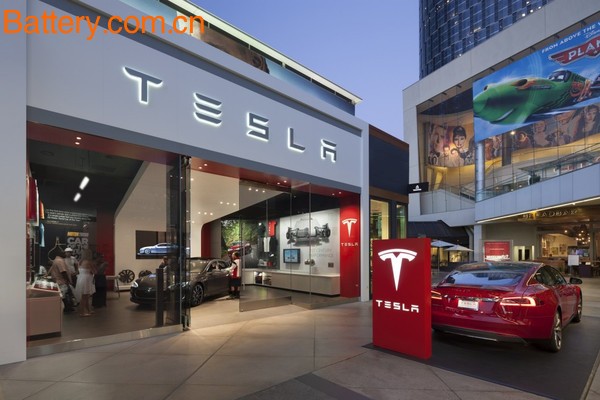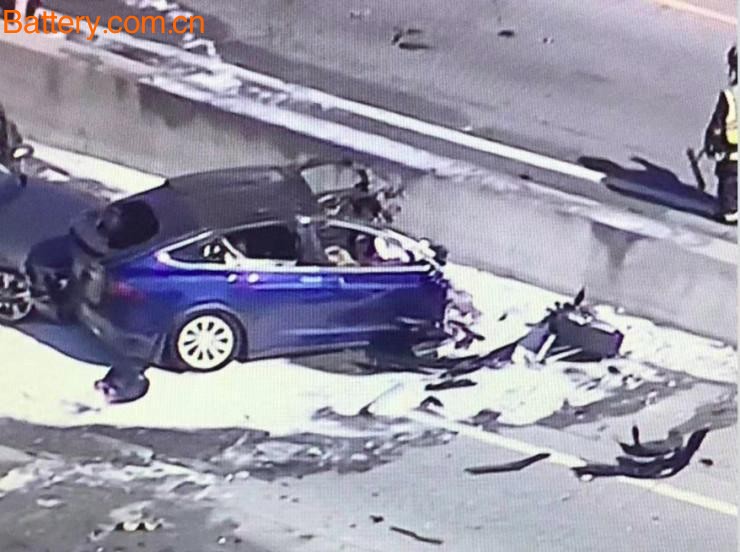I don’t know if it’s a coincidence or another reason. After the Uber autopilot test car had a fatal traffic accident due to the failure of the autopilot system, a Tesla Model X in California broke out after a traffic accident, causing the Tesla driver to be sent. The hospital died after being seriously injured. According to the California Highway Patrol responsible for the accident, the explosion may be related to the battery. The well-known fact is that battery technology is the core competitiveness of Tesla electric vehicles in terms of performance, mileage and handling better than the current traditional auto companies and peers. In fact, as early as 2013 to 2014, Tesla had several accidental fires in the United States, when tens of thousands of Tesla Model S were investigated by the US authorities. In 2016, there were many similar accidents in Norway, France, Austria and other places in Europe. The Tesla crash and fire incident also occurred in China. In April last year, a Model X exploded after a collision accident in Guangzhou, causing serious damage to the vehicle. The owner questioned the quality of the Tesla Model X vehicle itself; the car of the Chinese Tesla owner was spontaneously ignited because of the battery. So the question is, why is the battery technology that is the core competitiveness of Tesla repeatedly the culprit of the accident? What is the truth? The industry insiders familiar with Tesla know that at the beginning of Tesla's introduction of the Model series electric vehicles, many industry experts at home and abroad called it "the battery technology is old" and "no core competitiveness." The reason is that Tesla is the only car company that uses the 18650 lithium cobalt oxide battery. The so-called 18650 refers to a battery with a diameter of 18mm and a length of 65mm, which is often used as a battery core for notebook computers. It seems that the above-mentioned industry experts are not unfounded in the evaluation of Tesla batteries. More importantly, lithium-ion batteries are now approaching the power threshold, which is the chemical reaction of lithium-ion batteries, in addition to the ever-increasing number of batteries that Tesla has been using, compared to fuel-efficient all-natural or hybrid electric vehicles. The energy produced does not allow Tesla to have the same range of miles, which explains why Tesla uses a battery array of about 8,000 batteries placed on the bottom of the car (as a chassis) as its electric vehicle power. And clearly outperformed competitors in terms of performance (battery array), mileage (battery array), and maneuverability (the weight of the battery array acts as a thick chassis). However, the negative effect of this is that if the vehicle is in a collision, especially the Tesla electric array is installed at the bottom of the vehicle (in order to highlight the handling), the battery array is affected by the impact, which leads to the battery core. Or the module is very easy to shift, and the wires used in parallel and series will also fall off and short circuit, causing fire. At the same time, Model S and Model X's 18650 battery arrays have also eliminated the outermost insulation layer in order to reduce weight and cost. This has become the root cause of Tesla models' self-ignition during charging and collision. Although Tesla himself (including some industry insiders who admire Tesla) claims that it has excellent battery management systems, a large number of optimized battery grouping technologies, timely temperature monitoring systems, and individually designed cooling technology, these potential hazards can be exploited. Avoiding, but it is always difficult to circumvent the natural defects caused by the 18650 battery array. The natural and burning fires that have occurred since then have proved this. In addition, although the consistency of the battery can be very high in the initial use, in the course of use, such a large battery array must have different battery attenuation inconsistencies. As long as there is a slight inconsistency, a circulation will form inside the battery pack, which will greatly increase the battery loss and cause a self-discharge effect. This will further lead to a larger battery circulation and a decrease in battery efficiency. And Tesla's free replacement battery array service seems to prove from one side that it is not confident about the efficiency of its battery array. I don't know what the industry has seen here? What we see is that Tesla's so-called superficial performance, mileage and handling are better than the competition, which is achieved under the premise of the radical and sacrificing safety of the "old bottled new wine" technology. If the above is only for the limited potential of the Model series (such as Model S and Model X), the potential security risks are limited (in fact, many fires and explosions have occurred), then today Tesla relies on Model3 to dominate the mass market. At the time, the above strategy did not change substantially. The industry knows that compared to the aforementioned niche model series, Model3 uses Tesla's so-called new 21700 battery array. According to information disclosed by Tesla, Tesla's 21700 battery cell has a specific energy of 300Wh/kg, an energy density increase of more than 20%, a monomer capacity of 35%, and a cost reduction of 9% to US$155. KWh, the number of batteries required at the same energy can be reduced by about 1/3, and the system weight is reduced by 10%. Despite this, some insiders believe that from 18650 to 21700, although the performance improvement of single cell is more obvious, the energy density and cost reduction of the power battery system are only 10%, which is not as obvious as the single cell, that is, the overall cost. Considering the advantages of the decline, the downside is not obvious, but the negative impact is that compared to the 18650 battery, the 21700 battery has a shorter life, longer charging time and less security. Therefore, the adoption of the 21700 battery array is not an innovation and absolute performance superior to other models. It is Tesla's comprehensive choice of battery physics and economy, in order to cope with the cost and revenue pressure. In addition, according to industry analysts, the current Panasonic (the supplier of Tesla battery), Samsung SDI 18650 battery yield is generally above 98%, but after the replacement of 21700, the manufacturing process is not fully mature, the yield will certainly be affected Impact, product consistency is also difficult to guarantee. This is directly evidenced by the recent lack of capacity of the Model3. According to the internal staff of Tesla, it is said that Tesla's battery is currently encountering production obstacles, and the battery production is manually assembled. The problem is far more serious than expected. In mid-December last year, some batteries were still assembled by hand, and the number of employees was insufficient. In order to support the battery production line, Tesla also seconded some employees from its partner Panasonic. In addition, they also revealed that there are inexperienced problems in the quality control of Tesla battery products. Some Model 3 batteries have potential defects when they leave the factory. When Tesla delayed the production of Model 3, it was also acknowledged that the main constraint for the production of Model 3 came from the battery module production line of the Nevada Super Factory. Some production processes must be redesigned to increase production capacity. What we don't understand here is that for the cost savings of about 10%, Tesla will let some Model 3 with battery defects leave the factory in the case of immature technology and facilities. ? Just like Uber, it is clear that more than a year of autopilot road test is not quality, but it is still on the road test, regardless of the safety of pedestrians and drivers, even its executives claim that in Uber, for early commercial operation, security Not the first, at most in the third place. That Tesla's approach to cost and revenue, as well as the safety of drivers and others, is the same. It should be added that Tesla CEO Musk said in social media when he released Model3 last year: The appearance of 18650 battery is a historical accident. It is the standard of early products. Now only 21700 batteries can meet electric vehicles. Requirements for battery performance. I don't know how the industry understands Musk's statement. Is it true that the 18650 battery does have hidden dangers, and Musk indirectly acknowledges it? In summary, we believe that the recent traffic accidents caused by technology companies in the past have reflected the "pseudo-innovation" of some technological enterprises' so-called "making cars" innovation advantages (technical failure at critical moments or the use of old technology In addition to the radical approach, it is more important for the commercial interests to ignore the basic concept of “people-oriented technologyâ€. As a result, the “car-making†crisis of technology companies will soon come. Source: Titanium Media Author: Yongjie Crankshaft Connecting Rod Piston Inner Swing Cylinder Hydraulic Motor Crankshaft Connecting Rod Piston Inner Swing Cylinder Hydraulic Motor,Small Hydraulic Motor,Hydraulic Piston Motor,Hydraulic Auger Motor Ningbo delambo hydraulic power Co.,LTD , https://www.sun-seiko-hyd.com


